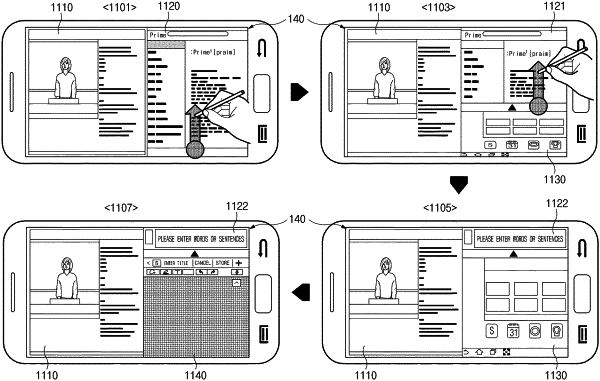| CPC G06F 3/04842 (2013.01) [G06F 3/04883 (2013.01); G06F 2203/04803 (2013.01)] | 20 Claims |

|
1. An electronic device, comprising:
a display; and a processor operatively connected to the display; and a memory operatively connected to the processor, wherein the memory stores instructions executable by the processor to cause the electronic device to:
display a first window corresponding to a first application and a second window corresponding to a second application on the display, the first window and the second window separated by a boundary line,
receive a first user input for moving the boundary line between the first window and the second window,
when the boundary line is moved in a first direction according to the first user input, increase a size of the first window, add a first visual element to the first window as the first window is increased in size, and decrease a size of the second window,
when the boundary line is moved in a second direction different from the first direction according to the first user input, increase a size of the second window, add a second visual element to the second window as the second window is increased in size, and decrease a size of the first window, and
receive a second user input moving in a particular direction from an edge of the second window,
in response to the second user input, display a third window on at least portion of an area corresponding to the first window or the second window, wherein the third window corresponds to a third application, and
after displaying the third window with the first and second windows, receiving a third user input on the third window, in response to receiving a third user input on the third window, remove the third window corresponding to the third application and display a fourth window corresponding to a fourth application in an area where the third window is output,
wherein a direction of the third user input is the same as the particular direction of the second user input.
|